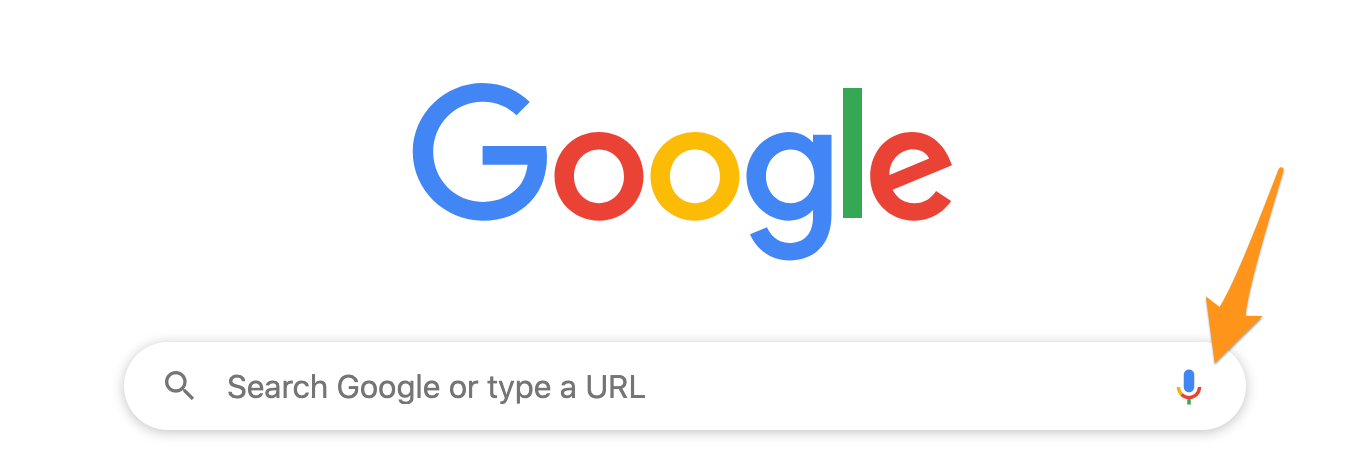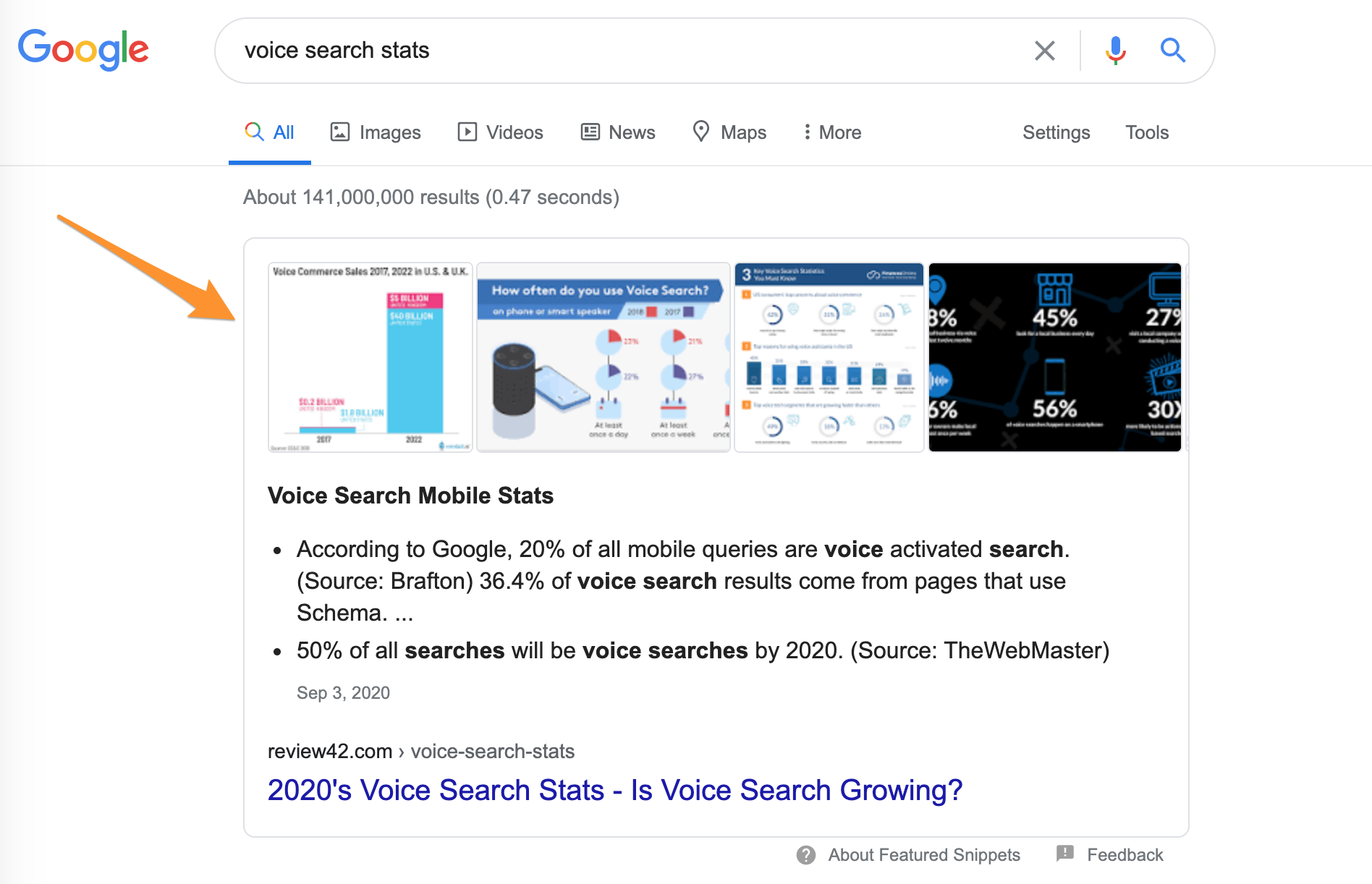Voice Search For Business: Is Your Local Business Voice-ready?
Did you know that more than one-third of the total US population uses voice search already?
What’s more, seven out of ten consumers prefer to conduct searches by voice than typing their queries into a search engine.
Customers use voice search to engage with businesses too. More and more of us use voice search to shop, for example. As a matter of fact, the voice shopping market is expected to reach $40Bn within the next two years. Finally, voice-based searches are 3x more likely to focus on local information and businesses than other types of queries.
But what does that all mean to you? Well, for one, it means that voice search is no longer a potential marketing strategy that you could consider later.
It’s an absolute must-have for local businesses.
In this post, you’ll learn how voice search works for a business and voice search strategies a professional services business like yours should use to get started with voice search SEO.
So, let’s begin at the beginning.
What are Voice Search and Voice Search for Business
Voice search is a feature that allows users to search for information using spoken voice commands rather than typing.
You can search with voice using any Internet-connected device as long as it has a voice input. So, it could be your computer, smartphone, a voice assistant like Apple’s Siri or Google Assistant, Google Home, Corona, Amazon Alexa, and more.
These devices, and the software they run, analyze what they hear, and then, query a search engine about that information, and present relevant results.
How they present it will differ depending on the device used for conducting a voice search, of course.
If you’ve used Google’s Voice Search option, you’ll see the screen results, just as if you’d typed the search query. In this case, the voice search is only an alternative way to input a search query.

If you’ve used a smartphone or a smart speaker, however, the device is likely to read the more relevant result back to you.
Important: That result is likely to contain information from Google’s featured snippet. This is the first result you see in many results, distinguishable by a frame and top-most position.

Why voice search uses the featured snippet? Because that’s the role of the featured snippet. it has been designed to offer a quick answer to a question. And this is what people typically look for when using voice search.
How customers use voice search to find local businesses?
46% of customers use voice search to find local businesses daily. So, what do they search for? What questions do they ask about local businesses?
In a nutshell, local voice search queries focus on transactional value. Customers use voice search to:
- Find a business location and get directions.
- Discover sales offers from a business.
- Get updates on product stock, in case of retail and similar businesses.
Customers also make bookings, reservations, and inquire about a business with voice search.
As a matter of fact, as marketers, we distinguish between three types of local voice business searches:
- Discovery, which helps customers discover or learn more about types of local businesses. A good example of a discovery voice search is, “What are the best digital marketing agencies near me?”
- Brand searches help people learn more about or interact with a specific business. Example: “What’s the address of Envoca?”
- Knowledge voice queries focus on finding answers to specific questions. These searches may not have an inherent local intent. That said, a local business might answer them. Example: “How long does it take to start ranking in local search?”It’s a question that a local digital marketer could answer and gain trust from potential clients in the process.
How to Rank in Voice Search
In this section, I want to outline top-level strategies that would help a professional services provider as you get on voice search.
#1. Optimize Your Entire Local Presence
Much of the information delivered via voice search comes from the featured snippet, and we’ll be talking more about it shortly. But there’s a whole wealth of it that the search engine pulls from your local search presence.
As a result, having an accurate and complete Google My Business listing is an absolute must-do. Business details like your categories, description, phone number, location, and more will also be used to rank your business in Google Maps. And that’s where the Google Assistant and many other platforms get information to assist and guide customers, also when they drive.
Similarly, set up accurate Apple Maps and Bing Places listings, as these are the sources of local business data for Apple Siri and Microsoft Cortana, respectively.
#2. Optimize Local Directory Listings
Siri, Alexa, and Cortana use information from local directories like Yelp or Yext and others. These voice assistants access business listings, reviews, photos, and other information to help customers with their brand and discovery queries.
Therefore, optimize your local listings, and ensure that your business has at least some reviews on those platforms.
#3. Include Voice-focused Content in Your Content Strategy
Content is the backbone of the majority of marketing strategies today, and voice search is no exception.
A voice-focused content isn’t much different from any other information that you publish. However, it does have an additional goal—To provide answers to questions, people are speaking into their various devices.
In practice, including voice-ready content in a content marketing strategy means focusing on a couple of additional areas:
- Understanding your customers and their behavior on devices.
- Focusing on conversational long-tail keywords that focus on questions, customers might speak into their devices. Another great strategy to merge voice search SEO with your content strategy is by focusing on answering the most common questions your customers ask you about regularly.
- Providing additional context to the content for search engines with structured data markup.
#4. Revamp Old Content
We’ve discussed the impact of a featured snippet on voice search SEO. So, it goes without saying – The more pages you can rank as featured snippets, the greater your chances of being discovered in voice search.
Many of your existing pages might offer an opportunity to appear in featured snippets, but you may have to revamp them a little first.
In practice, revamping old content may mean as little as tweaking the headline to focus on a question or as much as adding whole new sections of the content to provide a concise answer to a potential question.
#5. Improve Site Speed
I admit that, at first glance, there seems to be no correlation between site speed and voice search success. And yet, as one SEMrush study has found, page speed is a critical voice-search ranking factor.
The study reveals:
“[…] For most questions, the answer chosen by Google loads faster than the average page speed for all other results in the same SERP.”
Is That All?
No, of course not. Ranking on voice search involves optimizing many other, often complex elements of your local SEO and content strategies. But the five points above are a good starting point in positioning your local business in voice search.
Want to Rank in Voice Search but Feel Intimidated by the Process? Talk to Us About How We Can Help.
Located At
2121 W Spring Creek Pkwy
Plano, TX 75023
Start Your Free Website Audit
© 2025 Envoca - Digital Marketing & Local SEO Agency. All Rights Reserved